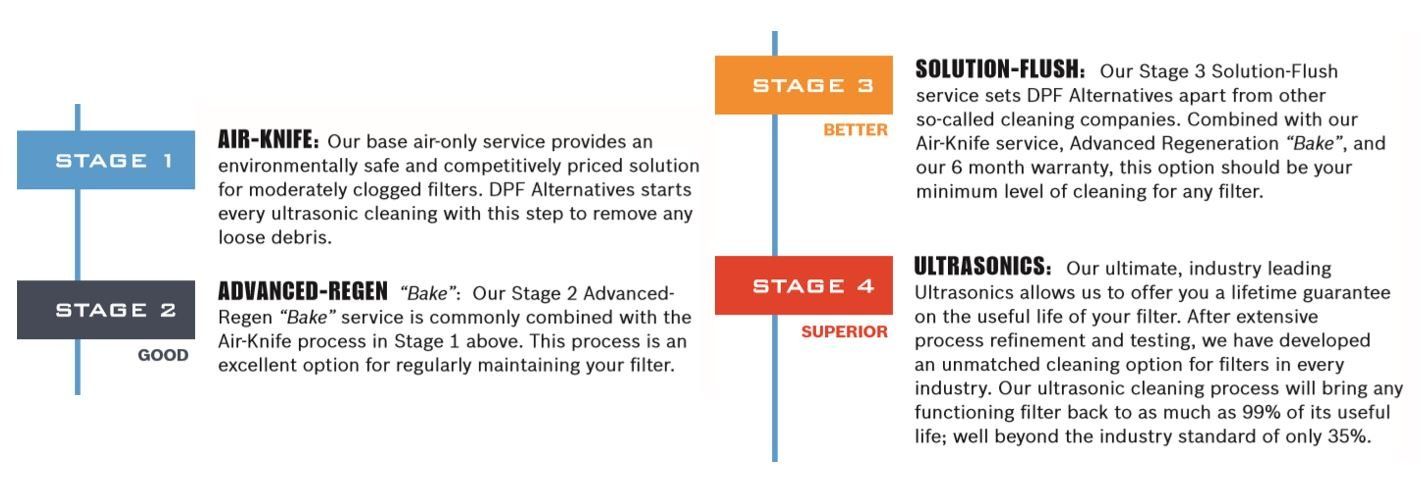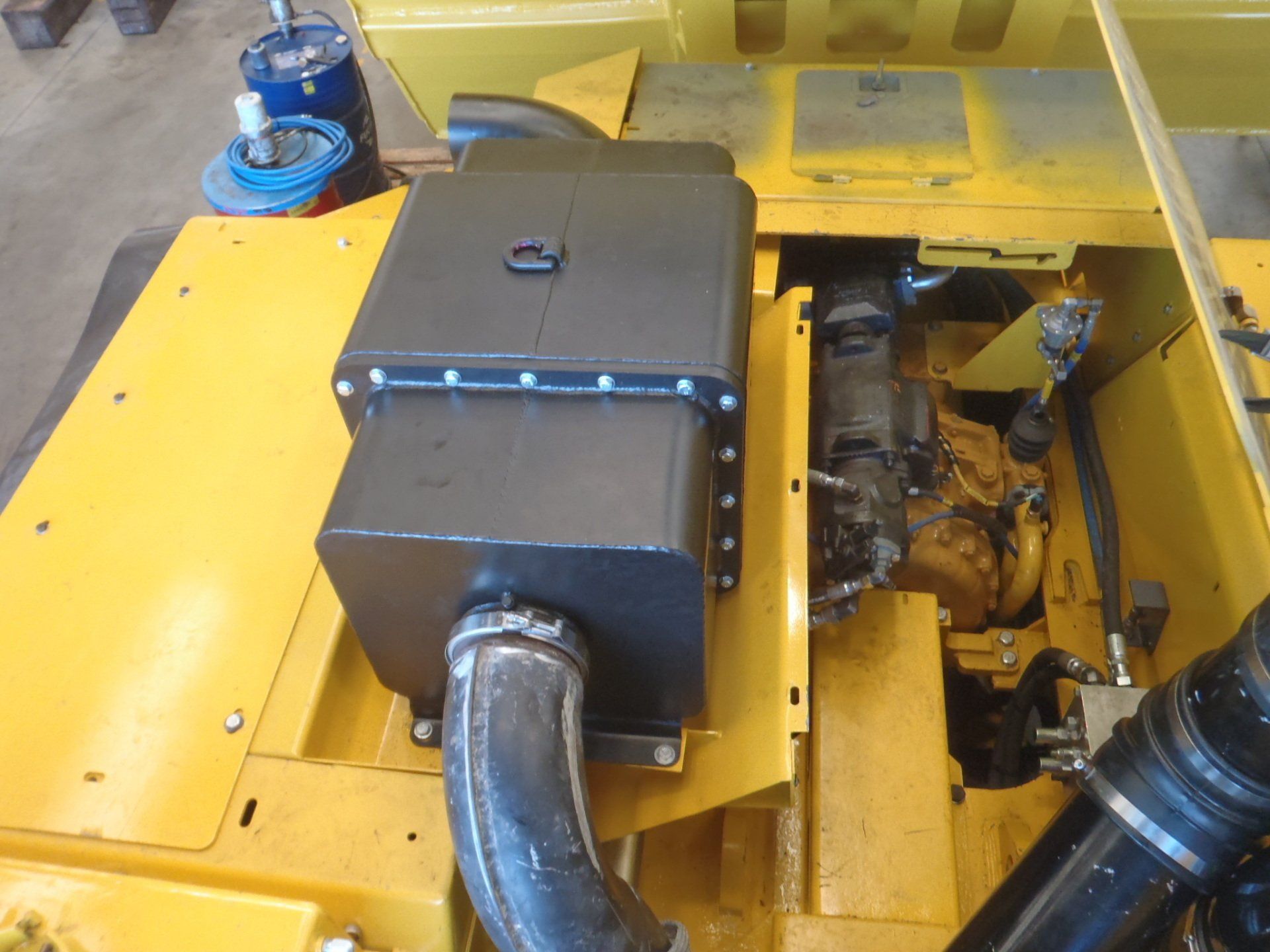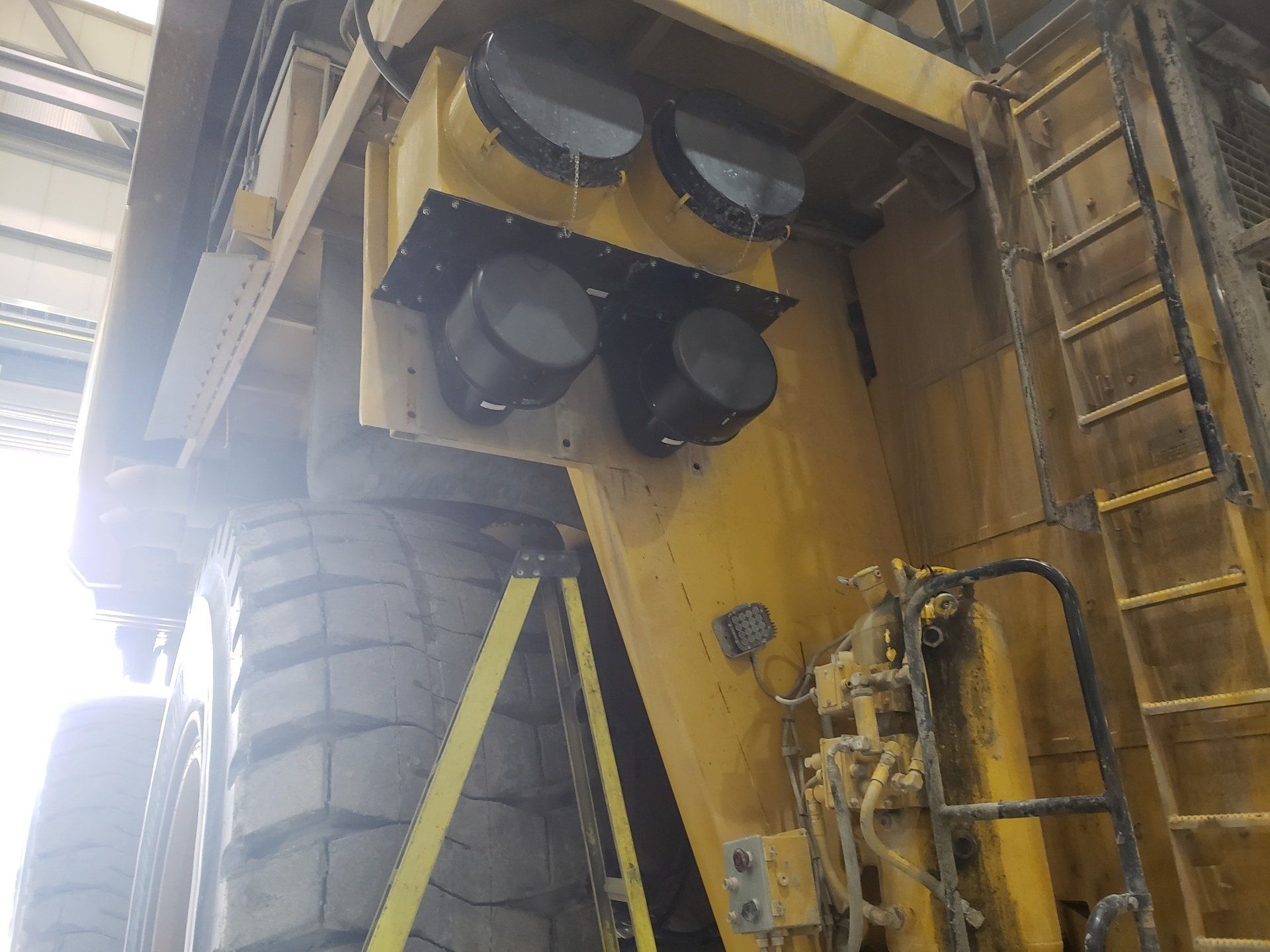Common Questions
- What is Ultrasonic?
Ultrasounds are sound waves with frequencies above the human auditory range (20 – 100 kHz). The ultrasound applications are based on the physical phenomenon of cavitation which may be induced in any liquid medium. The sound waves cause the microscopic bubbles present in the natural liquids to expand (during phases C and D of high pressure). The formation and implosion of bubbles (cavitation process) is produced thousands of times per second.
- Can all DPF's be cleaned with ultrasonic technology?
Yes
- Can you clean "irrecoverable" DPFs?
Yes, there has been many instances where we have been able to restore filters that other service centers with traditional cleaning equipment claimed were irrecoverable.
- Do you have an exchange program?
This program is being developed and we hope to have available very soon for some of the very popular filters.
- Do you pick up DPFs?
Yes we do. Contact our team for more information
- Do you have a DPF removal/installation service?
We would like to offer this service however space does not permit at this time.
- Why do filters need cleaning?
1. Though the process of continual thermal cycling in the DPF (Regeneration), with each soot burn off there is a residue of inert ash. When this gets mixed with humidity and heat from the exhaust this ash gets baked and impacted into the filter. Over a period of time, by performing the simple ‘pin test’, it will be found that the filter is filling and back pressure is increasing
2. There has not been sufficient regeneration and the filter has become plugged with soot
- Do I need to clean my DOC's?
Yes – Periodic cleaning of DOC’s required otherwise these can become soot loaded and their effectiveness compromised – especially if the DOC has been exposed to high-sulfur and poisoned.
- What is Ultrasonic Technology?
Ultrasounds are sound waves with frequencies above the human auditory range (20-100 kHz). The ultrasound applications are based on the physical phenomenon of cavitation which may be in any liquid medium.
The sound waves cause the microscopic bubbles present in the natural liquids to expand (during phases A and B of low pressure) and contract until they implode (during phases C and D of high pressure). The formation and implosion of bubbles (cavitation process) is produced thousands of times per second.
- Why is ultrasonic cleaning better than traditional cleaning?
Ultrasonic cleaning is required to break down the impacted ash residue that traditional high temperature baking and air blasting could not break down. Where traditional cleaning could typically only get the filter 65-70% clean, with ultrasonics we can restore the filter to 98% clean.
- How do I tell how clean my DPF is after cleaning?
Combination of flow test and pin test. With the Pin test, a thin wire is inserted into the clean side of the filter and a measurement taken. The Pin is then inserted into the ‘dirty’ side of the filter and a 2nd measurement taken. If the filter has been properly cleaned/restored then the 2 measurements should be equal.
- What size DPFs can be cleaned?
Our equipment is big enough to clean all known DPF sizes.
- How long does it take to clean my DPF?
Typically 24 hours. A high speed cleaning program is being developed, watch this space! There is the occasional filter that is very highly impacted and additional time is required.
- Where are your cleaning locations?
Calgary, Alberta
Edmonton, Alberta
Montreal, Quebec
Ottawa, Ontario
Toronto, Ontario
Winnipeg, Manitoba
- What happens if my DPF is covered in sensors?
Not a problem. There is an additional charge for removal of sensors. While we seek to be able to reuse these sensors, they are very sensitive and sometimes require replacing. The DPF Company can supply these with your restored filter.
- Will cleaning DOC's with ultrasonic effect the wash coat?
No – study by Tech Sonic International showed no loss in weight of filter/DOC as a result of cleaning
- Where can I get more information?





